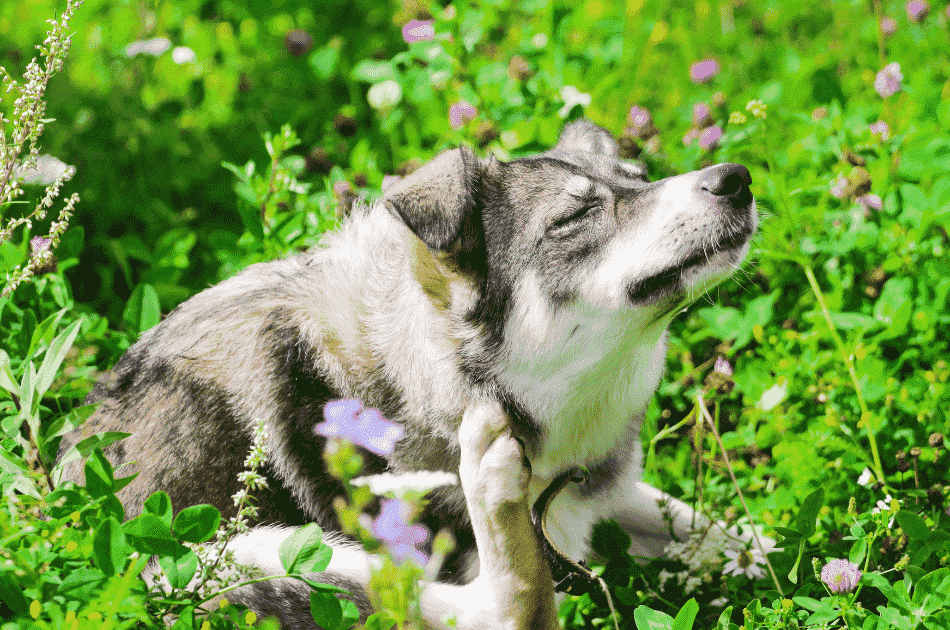
Itchy Pet? Seasonal Allergies Could Be to Blame
In this article we will look closely at seasonal pet allergies, helping you identify the signs, understand common triggers and look at common diagnostic options. We at Haarstad Veterinary Dermatology are here to help you navigate the world of seasonal pet allergies and help get them back to feeling happy and itch-free.
Recognizing the Signs: Common Symptoms of Seasonal Pet Allergies
A healthy pet is a joyful pet. However, if your furry friend suddenly comes down with a case of the “itch” along with other possible symptoms, they might be suffering from some type of pet allergy. Here are a few common signs to watch out for:
- Excessive Scratching and Licking: This is a classic sign of pet allergies and can be identified through constant scratching, licking or biting typically at the paws, ears, face and abdomen.
- Skin Irritation: Redness, inflammation, crusts (scabs) and hair loss are all indications of a potential allergy. In addition, a pet’s attempt to relieve discomfort can lead to hot spots (moist, inflamed areas on the skin) and even secondary skin infections.
- Redness, inflammation, scabbing, and hair loss: are all indications of a potential allergic reaction.
- Red, Watery Eyes: Just like in humans, seasonal pet allergies can cause itchy, watery eyes. You may notice your pet pawing at their eyes or have excessive tears.
- Chronic Ear Infections: More common in dogs, recurring ear infections can be linked to allergies. Constant head shaking and scratching at the ears are common signs to watch for and could be a secondary indicator of an allergy.
- Respiratory Issues: Though less common, some pets can experience cough, sneezing and difficulty breathing in response to an allergy trigger.
Uncovering the Culprit: Common Triggers of Seasonal Pet Allergies
While it is possible your pet could be allergic to a variety of things, the most common environmental factors that trigger seasonal allergies include:
- Pollen: Tree pollen (spring), grass pollen (summer), and weed pollen (fall) cause a reaction when pets encounter pollen that gets trapped in their fur and on their paws.
- Mold Spores: Indoor and outdoor mold spores can wreak havoc year round, but it is typically most troublesome in the spring and fall when there is extra moisture in the air.
- Dust Mites: These tiny, microscopic creatures live in carpets, bedding and furniture and can be troublesome year round for some pets.
Diagnosing Seasonal Allergies
If you think your pet is suffering from seasonal allergies, it’s important to schedule an appointment with your primary vet or a veterinary dermatologist like those at Haarstad Veterinary Dermatology to get the proper diagnosis and treatment. A thorough examination could include:
- Detailed Medical History to discuss your pet’s symptoms, lifestyle and environment to identify potential triggers
- Physical Exam. to assess any lesions and location of the itching and irritation and to rule out other potential causes of discomfort.
- Allergy Testing. Sometimes skin or blood tests are recommended to pinpoint specific allergens.
There is no cure for seasonal allergies for pets, but there are ways to manage symptoms. Here are a few of the most common treatment options:
- Allergy Avoidance. During peak allergy season, it is a good idea to limit your pet’s time outdoors, especially when pollen counts are high. Wipe their paws and fur after walks and close windows during the high pollen seasons.
- Allergy Medications to relieve itching and reduce inflammation (eg. antihistamines, corticosteroids, Apoquel, Cytopoint, Atopica or Cyclavance).
- Immunotherapy (allergy shots) help desensitize your pet to specific allergens.
- Topical Treatments such as shampoos or sprays can soothe irritated skin or treat/prevent infection.
- Dietary Changes and/or supplements can support the skin barrier and reduce inflammation.
- Flea & Tick Control: Even if your pet doesn’t have fleas and ticks, consistent prevention can help rule out these potential causes of itching.
Seasonal allergies are a nuisance for both pets and their owners. However, with proper diagnosis and management with vets like those at Haarstad Veterinary Dermatology, you can get relief for your furry friend and enjoy the best of the non-winter months in Minnesota.
